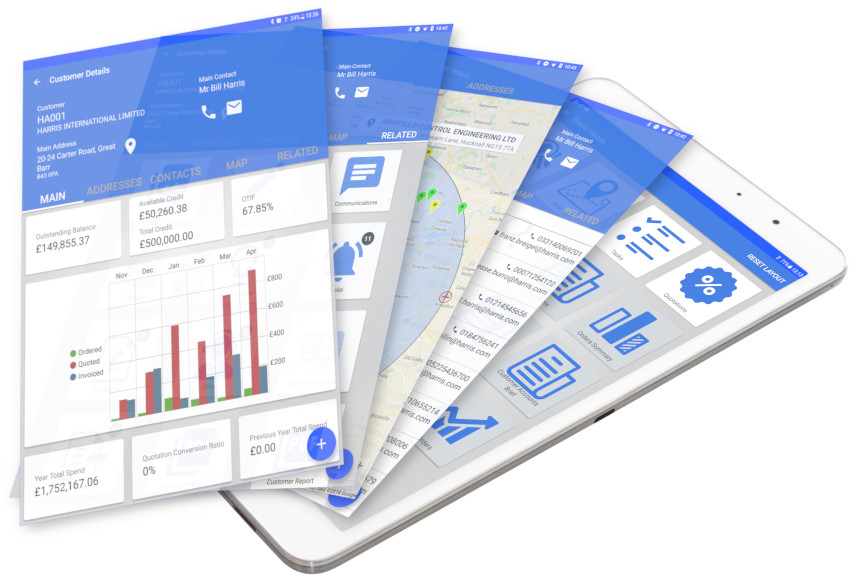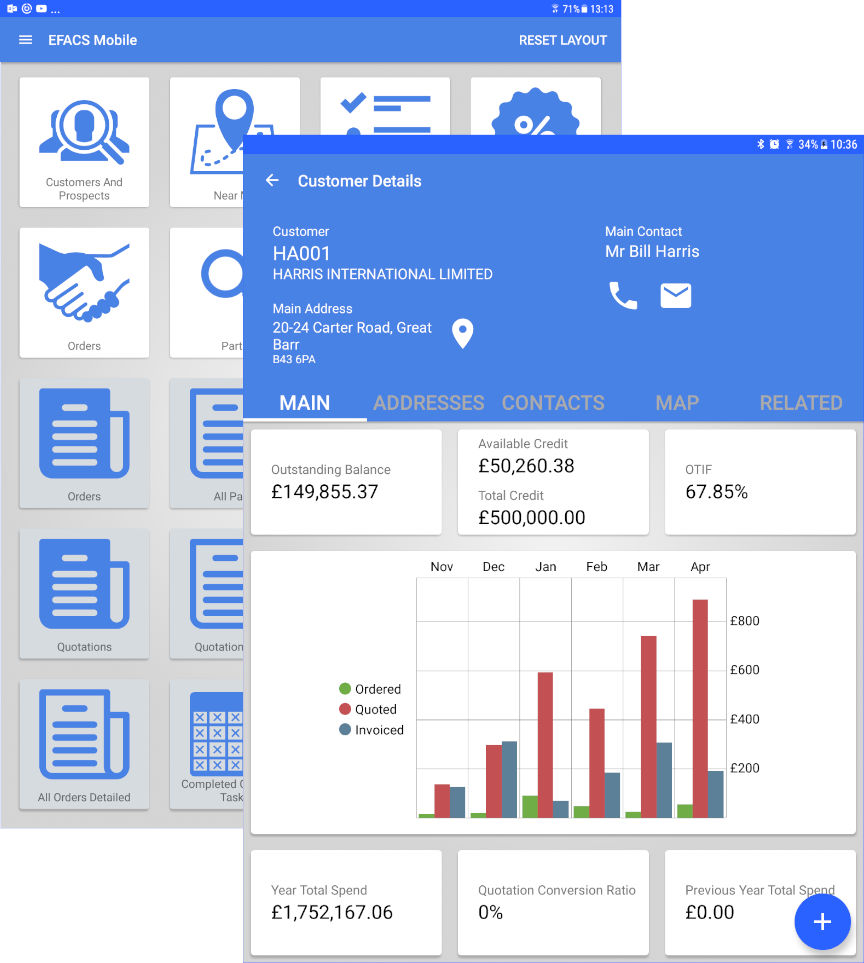
Once little more than a contact management system, Customer Relationship Management (CRM) for many businesses is now an essential powerhouse of the Sales department. Within the context of manufacturing businesses, this has long been recognised by Enterprise Resource Planning (ERP) providers and has become an increasingly integrated element of modern business management software. With the widespread adoption of mobile connectivity, CRM functionality has been extended to the world of the handheld device with vital sales information and customer visibility now being available as and when the mobile sales person needs it.
Up until recently, one area that has not benefited as much as it could from CRM is the Service department. Service CRM has traditionally focussed on the recording of service transactions and/or interactions, and in many cases, has been treated as a poor relation to Sales CRM. This can be clearly seen by the IT approach used by many companies when it comes to running their Service CRM. It is not uncommon to find companies with a modern integrated ERP system complete with Sales CRM, that also run a standalone third party CRM system for the Service department. Others may have an integrated ERP and Service Management system and still have a separate, standalone Service CRM package.
There are however a growing number of companies realising the considerable sales potential and business opportunities available by looking at their Service CRM differently. At the heart of this is the recognition that in many cases, a company’s Service Engineers are often a hugely underutilised sales force. Not only are they invariably in the best place to see where additional value-add or upgrade sales possibilities exist, they are often in a considerable place of trust with the customer, more so than the sales teams at times. To truly capitalise on this however, what is required is an integrated business management system where all customer interaction information, whether ‘Sales’ or ‘Service’ is treated equally, stored centrally, and is quickly and clearly visible across the entire enterprise, as and when required – including the mobile Service Engineers/sales teams.
To see how this would work in practice, consider the following scenarios. In the first, a mobile Service Engineer is on a customer site for a routine visit and they discover a problem with one of your machines. With a fully integrated Service CRM system, this information can then be immediately relayed to the back office where a quote can be quickly generated and sent to the customer. Because both Sales and Service share the same CRM data, the back office can then follow up the quote and carry on the sales cycle.
 Alternatively, take the scenario where a mobile Service Engineer is on a customer site and notices a machine which isn’t one of yours that is coming to the end of its service warranty period. Once again, this information can be immediately relayed to the back office where it can be appropriately followed up as a potential sales lead at the correct time. Service Engineers are also best placed to be generally aware of the state and condition of much of the machinery and equipment at a customer site. They are also best placed to see potential ‘new business’ opportunities. Say for example your customer uses consumables with your equipment – is this something that you could potentially supply both here and at similar sites? Instead of this information, at best, being recorded in a disconnected standalone Service CRM package, it can now be seen for what it truly is – genuinely insightful information that can add to the sales and customer interactions recorded by the Sales department.
Alternatively, take the scenario where a mobile Service Engineer is on a customer site and notices a machine which isn’t one of yours that is coming to the end of its service warranty period. Once again, this information can be immediately relayed to the back office where it can be appropriately followed up as a potential sales lead at the correct time. Service Engineers are also best placed to be generally aware of the state and condition of much of the machinery and equipment at a customer site. They are also best placed to see potential ‘new business’ opportunities. Say for example your customer uses consumables with your equipment – is this something that you could potentially supply both here and at similar sites? Instead of this information, at best, being recorded in a disconnected standalone Service CRM package, it can now be seen for what it truly is – genuinely insightful information that can add to the sales and customer interactions recorded by the Sales department.
By making Service CRM a truly integrated component of a wider ERP system, Sales and Service departments working effectively as a team can benefit from other functionality within the system. One very obvious example is in the area of Document Management where all relevant Sales and Service documentation can be stored alongside each transaction, making it immediately accessible to whichever point of customer contact needs it, when they need it. Another would be building in appropriate workflows to ensure sales opportunity follow up processes, including quote generation, credit check, etc. are adhered to in order to maximise effectiveness.
By ensuring each customer interaction is as positive and informed as possible, you have the best chance, not just of keeping your existing customers happy, but growing your business with them.
